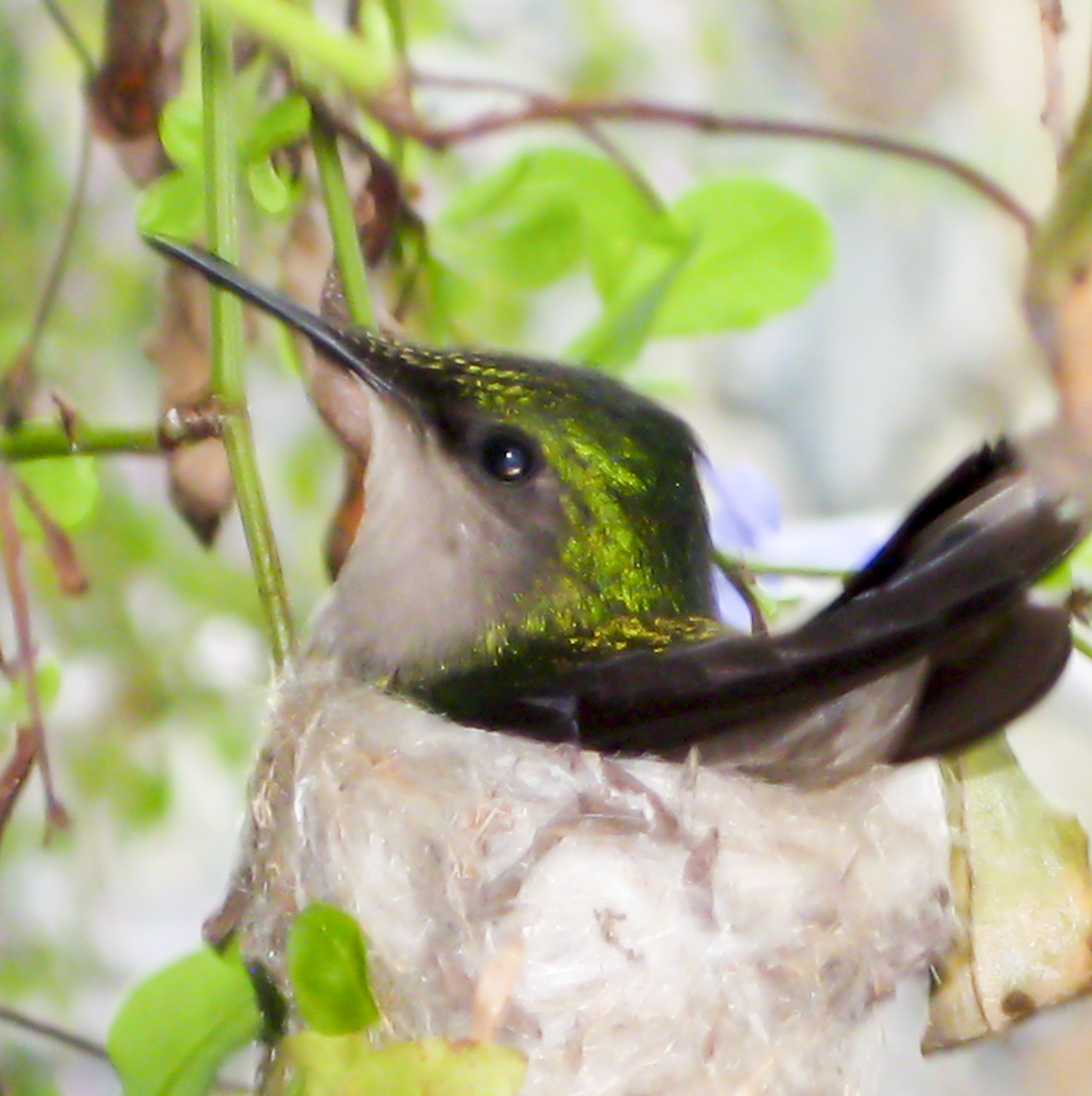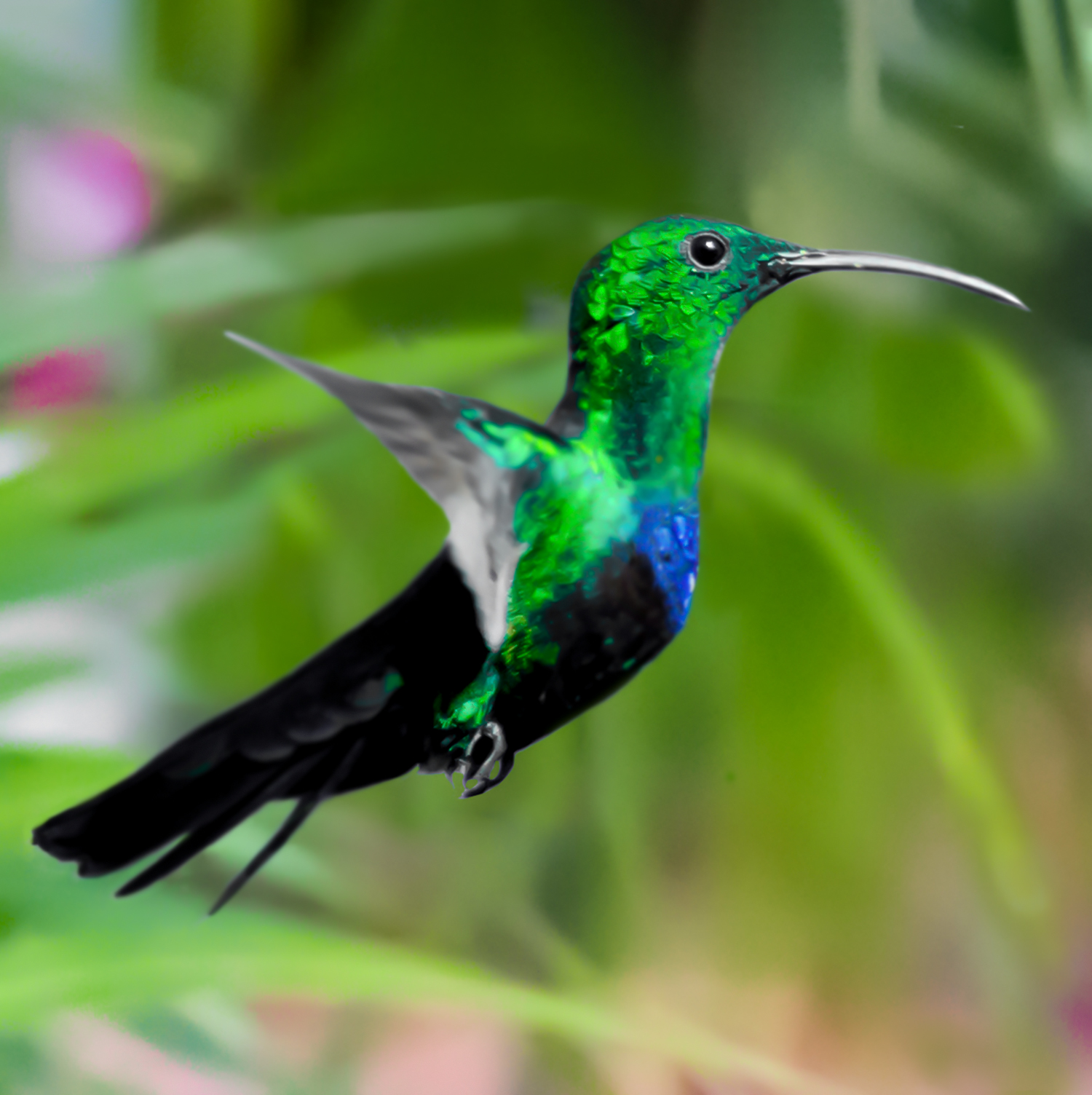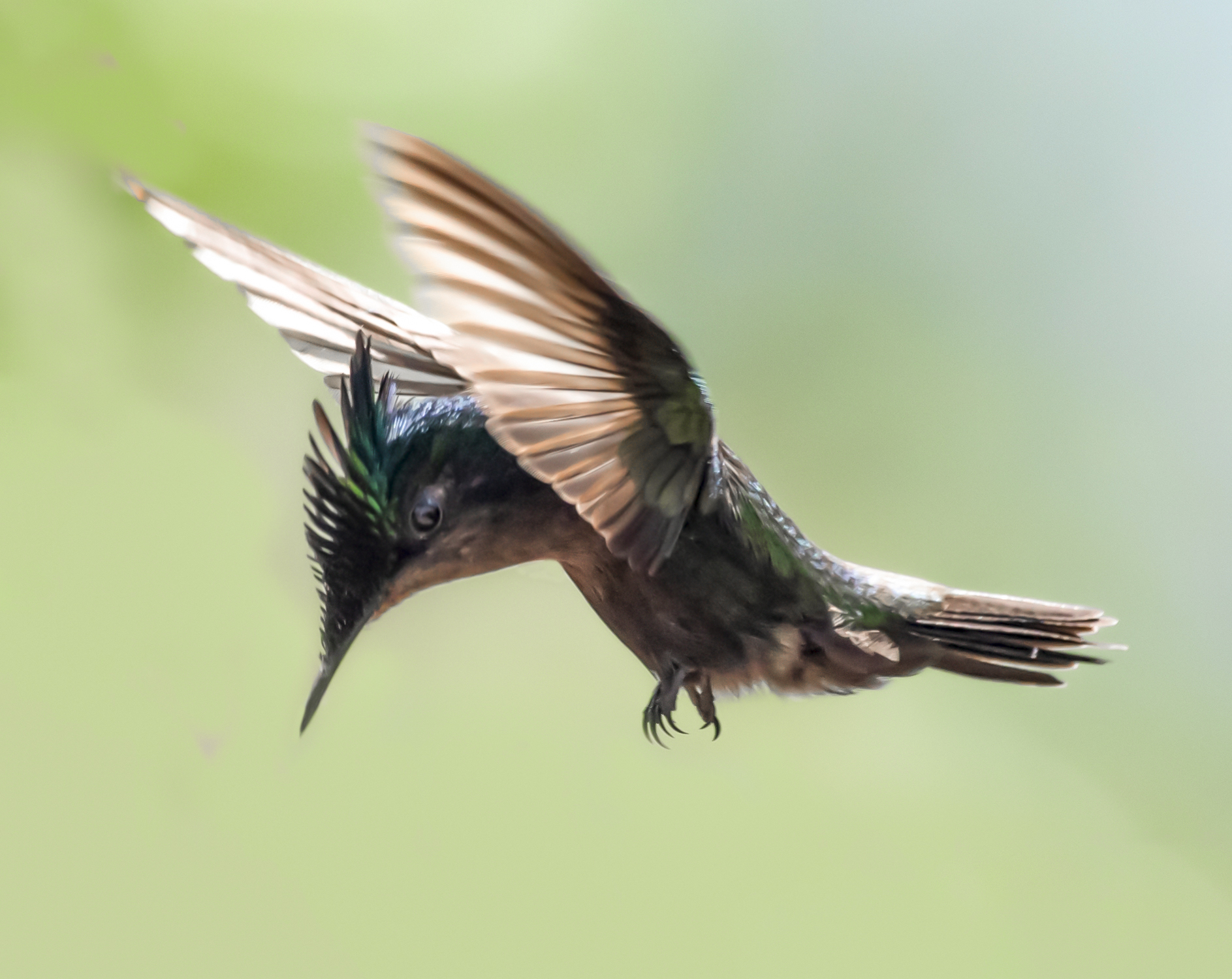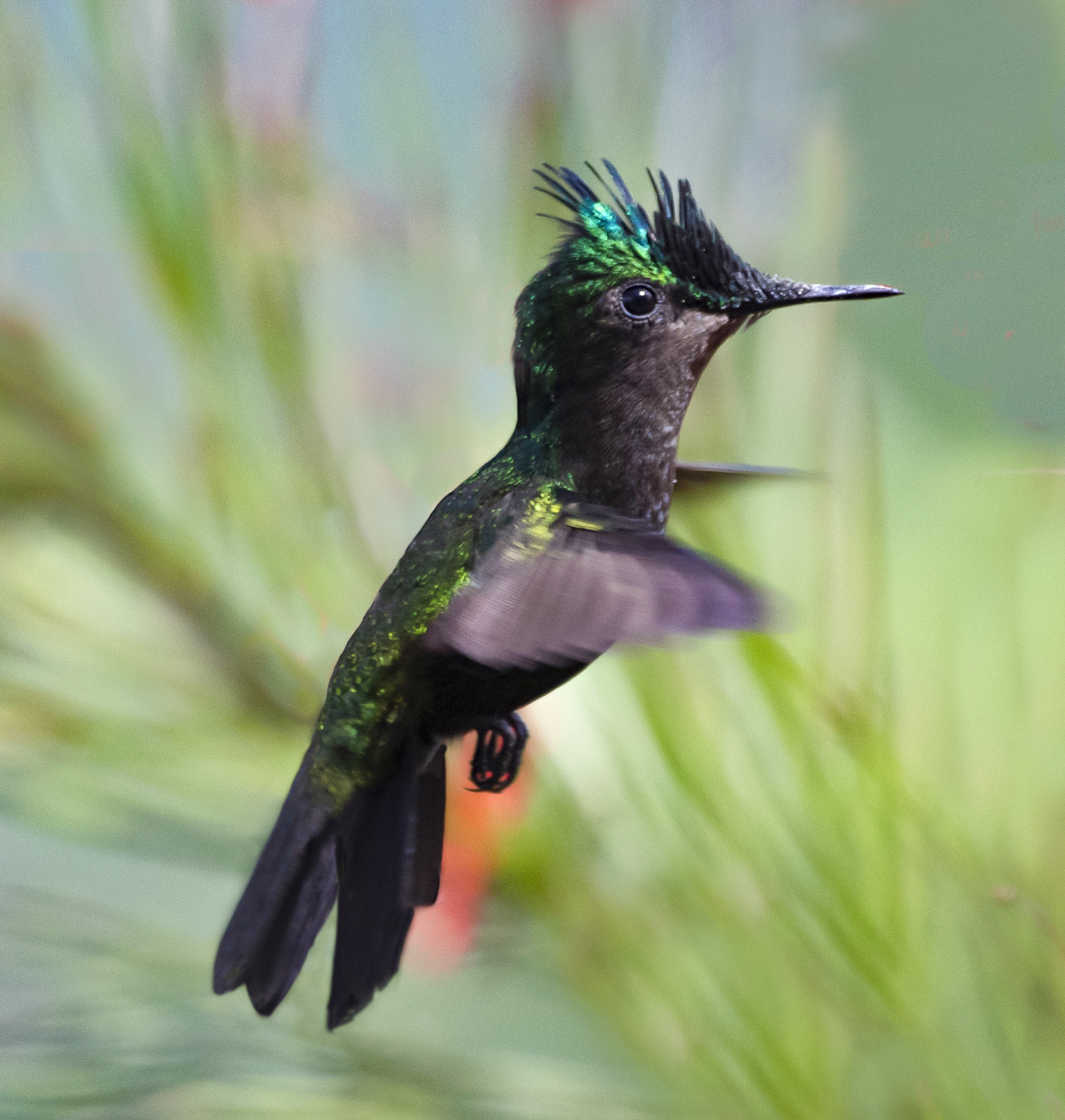
As colorful dance troupes prepare their costumes and routines for the parade, local hummingbirds are engaging in their own display of fine feathers and cool Caribbean moves.
There are two main types of hummingbirds on St. John: Green-throated Caribs and the slightly smaller Antillean Crested Hummingbirds. The different hummingbird troupes will be competing for attention this summer as they parade their plumage.
The male Antillean Crested Hummingbirds have distinctive bright green headdresses. They can make their iridescent head feathers stand up and flash brightly like a neon sign when they turn their heads to catch the sunlight. This is an impressive move for attracting females, and also blindingly disorienting for would-be rivals, or attackers.

The males have additional green feathers on their backs, but mostly plain dark feathers in front. The female Antillean Crested Hummingbirds have iridescent green feathers on their heads and backs, with light fronts and low crests.

Meanwhile, the festive outfits for the Green-throated Caribs look pretty much alike for males and females: iridescent green head and back feathers, with shiny blue patches on their chests. They are larger than the Antillean Crested hummingbirds, with longer bills that are also slightly curved.

These hummingbirds will not be marching in the parade though. They are experts at hovering in the air, where they can show off their impressive wing speeds of 50 to 80 beats per second. They can also fly backwards and upside down.

Outside of festival activities, you will often see tiny hummingbirds hovering peacefully over bright blossoms, drinking flower nectar. In return, the hummingbirds provide flowers with much-appreciated pollination services. It all looks so sweet.

However, hummingbirds are also often fiercely competitive.
The males are very aggressive in defending access to what they consider ‘their’ flower patches. They need to eat lots of nectar to power those fast wing beats, so they feed frequently from available flowers. They are quick to dive bomb intruders – not just other hummingbirds but also larger birds like bananaquits – poking at them with sharp bills and tiny talons. And then during breeding season, they will also fight with other males over territory.

Both types of St. John hummingbirds were badly affected by the 2017 hurricanes, when there were no flowers to be found and many birds starved. The Antillean Crested ones have been particularly slow in rebuilding their numbers back up, so we are lucky that there are enough of them to form a troupe. (Actually, I read that a group of hummingbirds is variously called a bouquet, a glittering or a charm.)
I see the larger Green-throated Caribs more often, so I feel closer to them. They are definitely brilliant, charming and energetic.

But I have to say I am secretly rooting for the smaller Antillean Crested team. Those flashing green head pieces are hard to resist.

Gail Karlsson is an environmental lawyer, writer and photographer. She is the author of two books about the Virgin Islands – The Wild Life in an Island House, and the guide book Learning About Trees and Plants – A Project of the Unitarian Universalist Fellowship of St. John. She has also recently published A Birds’ Guide to The Battery and New York Harbor. Follow her on Instagram @gailkarlsson and at gvkarlsson.blogspot.com.


